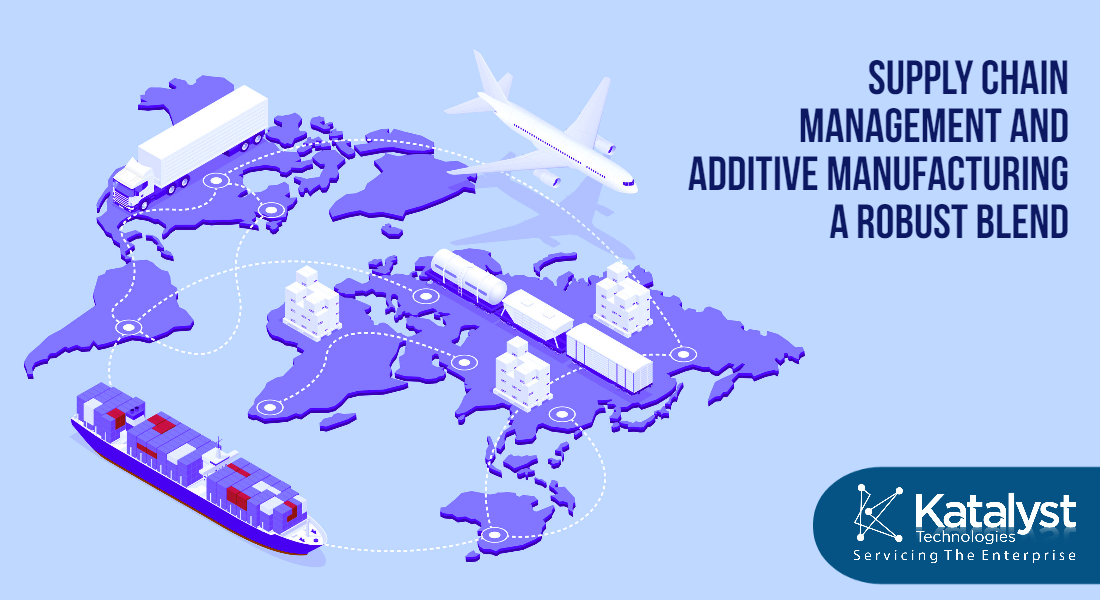Supply Chain Management and Additive Manufacturing: A Thriving Blend
Even the most influential supply chain has some weak joints. Perhaps yours is focused on the upstream, with small manufacturers dealing with quality control issues, or downstream, with retailers struggling to make products available to customers on time. In either case, you can strengthen these belts or forge alternatives using additive manufacturing.
In the industrial world, additive manufacturing has an impact in several sectors, from logistics to healthcare, from space to consumer. This necessarily has consequences for the supply chains of brands that use AM. In fact, it can provide many quantifiable benefits for supply chain management and operation. All the advantages, from simplifying processes to reducing bottlenecks and reducing costs, are a separate feature. We are here to summarize how supply chain management and additive manufacturing can work hand-in-hand.
How Supply Chain Management Is Coping With Effective Additive Manufacturing?
Lockheed Martin recently demonstrated additive manufacturing's ability to reduce the hardware input required to manufacture aerospace components significantly. By using parts made of high-quality materials, such as titanium alloys, the use of Lockheed AM has reduced the purchase rate for flying, the relationship between the material received and the final output of the parts.
The process of developing additive manufacturing at Rolls-Royce challenged many of the typical assumptions of supplier involvement in the development of new technologies. Unlike the standard buyer process that provides suppliers with a predefined design specification, additive manufacturing suppliers have taken the lead in component design due to their in-depth knowledge of technology.
Rolls-Royce expects additive production to produce 85% less waste compared to standard smelting and forging methods, with closed-loop processes capturing all waste for quick reuse. Thanks to additive manufacturing, Rolls-Royce is also able to produce closer to its largest customers, Boeing and Airbus, which reduces lead times and pipeline stocks. Local production reduces the company's exposure to supply chain risks, such as trade wars, political upheavals, and natural disasters that can prevent the flow of subcomponents. Rolls-Royce's investment in additive manufacturing has a transformative effect on the supply chain, bringing production closer to its customers and significantly reducing supply chain costs.
Ways Supply Chain Management Is Beneficial For The Manufacturing Process
- Reduced material input for lean production
- Simplified production processes and reduce costs
- Less risk of developing an emergency plan
- Improved process flexibility by responding to demand more quickly
- Redesigned supply chain networks into decentralized and distributed production networks
- Reduced the capital cost of entering new markets
The ground zero update,
The slumping economic effects are beginning to be felt, and many economists predict a profound collapse for an untold duration. While some supply chains are incredibly complicated to chase, for supply chain planners, one pitfall to avoid to continue is the dynamic known as inventory bounce.
It is also time for the supply chain to strengthen and contribute. One company solved a lack of rescue ventilator parts in Italy using 3D printing and making it available during the day. This explains the role of additive manufacturing in the supply chain.
Fashion and accessories brands like Coty, LVMH, L'Oréal, and others have stepped up and reorganized the perfume and hair gel production facilities to produce a hand sanitizer.
Supply chains have unique capacity and adaptability, although the challenges are far from over. But the result could be fundamental changes, and a whole range of managers and supervisors would rethink global supply models and dependencies.
Katalyst Technologies is one of the pioneering supply chain consulting partner. Its solution offering includes CeleroERP and CeleroWMS that are best suited for any manufacturing operation and effective business planning.


